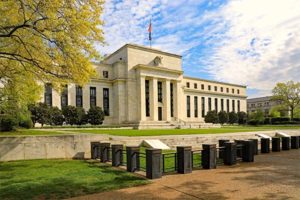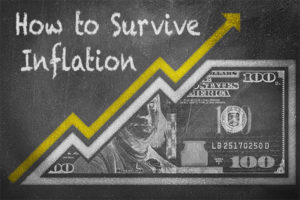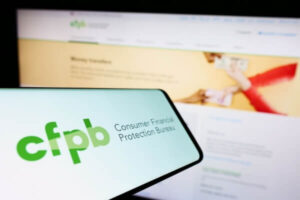Americans are taking on ever larger debt loads as they struggle to maintain living standards. They are borrowing more on their credit cards, taking on a soaring levels of student debt and signing more and more personal loans, all making the next recession even riskier for those already struggling to make payments.
Housing prices and higher education costs are rising far faster than most people’s incomes, forcing them to either take on larger debts or forgo what many consider the American Dream – home ownership and a college degree. Those who take on debt often postpone marriage and having children in an attempt to catch up on debt obligations.
With new car prices in May of 2019 were over $37,000, an affordable auto loan now comes with a five- or six-year repayment schedule. Credit card interest rates also continue rising as balances edge up. In the last decade, non-mortgage consumer debt has increased to $4 trillion, a record even when adjusted for inflation. Americans owed an eye-popping $14 trillion to creditors in 2018 – an average of $144,100 for each household carrying at least one form of debt.
Debt depresses individuals’ balance sheets, but not all of it is bad. Mortgages, small business loans and even student debt, when managed properly, can open opportunities to prosper in the long run. Other forms of debt are not as positive. Car loans might give borrowers access to necessary transportation, but as anyone who has owned a car knows, the asset decreases in value for a long as you own it.
Credit Card Debt Statistics
Credit cards are incredibly convenient, allowing card holders to instantly pay for a vast assortment of goods and services. But their simplicity is a siren call to disaster for those who don’t keep careful track of spending.
After dipping during the Great Recession, aggregate consumer revolving debt – mostly credit cards – has been on a steady rise, reaching $1.032 trillion in summer 2019, according to the Federal Reserve Board. That is an increase of 2.4% from summer 2018. Though delinquencies remain relatively low at around 2.5%, credit experts say the steady rise in consumer borrowing could foretell trouble if the economy enters a recession and the unemployment rate rises.
Credit card debt balances increased in every state except West Virginia in 2018. Balances rose the most in Sun Belt states and the average balance rose to $3,220 for each adult carrying a balance, according to a LendingTree report.
“People who are calling us are on the cusp of difficulty,” said George J. Janas, a consumer debt counselor in Orlando, Fla. “People are starting to take out other loans to pay off credit card debts and that could be the beginning of a trend.”
Credit card interest rates have been edging higher, putting a strain on those carrying balances. Janas said a sharp increase in personal loans suggests that people are using personal loans to pay off their credit card balances. He said much of that personal lending comes from online sources that aren’t subject to the same regulatory restrictions as commercial banks.
But there is also positive news. The American Bankers Association reported in August 2019 that credit card debt as a share of disposable income fell to 5.4% in the first quarter of the year. That’s little changed since 2013. Though the amount of credit card debt is up, the increase is in line with disposable income growth.
“It is encouraging that credit card debt relative to income levels remained low and steady as the economic expansion enters its 11th year,” Dan Smith, executive director of the ABA’s Card Policy Council, said in a statement. “Consumers continue to be well-positioned to meet their financial obligations.”
Student Loan Debt Statistics
The soaring cost of a college education, unsurprisingly, is producing a staggering amount of debt as students and their families borrow to cover the cost of tuition, room and board and other fees. Aggregate student loan debt increased 5.1%, or $80 billion, from 2017 to 2018 to $1.6 trillion. It exceeds both credit card and auto loan debt levels. Worse still, 11.5% of borrowers were delinquent in making payments in 2018.
Unlike most other forms of debt, student loans aren’t dischargeable through bankruptcy, which means borrowers are obligated to make payments even if they don’t have the income. People default for a variety of reasons, but job loss or failure to land a position that pays enough to make loan payments are common problems.
Student debt is a multi-generational problem as parents and even grandparents sign loans to help the student. If the student can’t pay, the debt becomes a family problem.
“The amount of student loan debt is staggering,” Janas said. “My instincts say the default rates will continue to rise.”
Refinancing student loan debt has become a big business. Lenders in the sector refinance and consolidate loans, allowing those who expect their salaries to increase a way of prolonging their payoff periods and making the debt load more manageable in the near term.
Student loans are an issue in the 2020 presidential campaign as Democratic candidates compete with ideas to lower the burden on borrowers. There are good reasons for the concern. Soaring student loan debt has been correlated with delayed marriages, a drag on new business formation, a reluctance of Millennials to buy homes, an inability to build emergency funds and delays in building retirement savings accounts.
Other Debts
Auto loans, mortgage balances and the use of personal loans are all increasing as cash-strapped Americans use credit to maintain their lifestyles.
Personal loan balances rose more than 13% to $130 billion between 2017 and 2018. Online lending, which often involves peer-to-peer lending provides a lot of personal loan capital, and commercial lenders are returning to the market, making personal loans the fastest-growing form of consumer debt.
Car and mortgage loans are growing more slowly. Financial advisers usually encourage people to borrow to buy homes because housing prices generally increase over time, giving borrowers greater equity and increased savings. Car loans aren’t so wise.
If you can afford to buy a car with cash, it is generally the best move. Since cars decrease in value, a car loan is a double hit – you lose money on the depreciated value of your car and you pay interest on the loan. It’s money you can’t recoup or invest in a retirement account.
Worse still, more than 4% of auto loans were delinquent in 2018, putting car owners at risk of losing their transportation and the money invested in their vehicles.

4 Minute Read
Sources:
- Horymski, C. (2019, April 24) U.S. Consumer Debt Statistics for 2019. Retrieved from: https://www.lendingtree.com/debt-consolidation/consumer-debt-statistics-2019/
- Ingraham, C. (2019, June 25) 7 Ways $1.6 Trillion in Student Loan Debt Affects the U.S. Economy. Retrieved from: https://www.washingtonpost.com/business/2019/06/25/heres-what-trillion-student-loan-debt-is-doing-us-economy/
- Andriotis, A. et.al. (2019, August 1) Families Go Deep in Debt to Stay in the Middle Class. Retrieved from: https://www.wsj.com/articles/families-go-deep-in-debt-to-stay-in-the-middle-class-11564673734?mod=hp_lead_pos3
- Jones, J. (2019, June 24) Auto Loan Statistics. Retrieved from https://www.lendingtree.com/auto/debt-statistics/

















